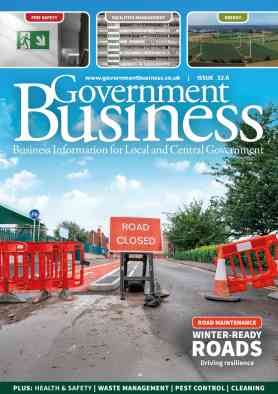
Dealing with the aftermath of flooding
Andrew Devitt, technical manager at the Property Care Association talks about how to respond to a property flooding.
For owners of properties that have experienced unprecedented flooding within their homes, there underlies a mixture of emotions prior to the flood, during the flood and after the water has receded. The physical impact of flood water can cause irreparable damage to personal items and will have a devasting and costly impact to the building’s structural integrity and the damage of fittings and building services. Physical recovery from the flood will take several weeks, possibly months but the emotional recovery can take much longer.
There are also reported cases of hidden damage caused by the original flood waters not identified initially and later covered over by remedial repairs and later reappearing resulting in further extensive remedial works adding further distress to residents.
Flooding is defined as the covering of normally dry land with a large volume of water and is the consequence of the occurrence of natural weather events. This may be caused by the action of heavy and intensive rainfall over a brief period or prolonged rainfall combined with other factors like saturated ground, high windstorms, or high tides.
Types of flooding
The common types of flooding in the UK include:
Coastal flooding – heavy overwater coastal storms combined with offshore rainfall and high tides cause sea levels to significantly rise above normal levels forcing sea water to the land. River flooding – heavy or prolonged rainfall over time on high ground worsened by snow melt waters.
This water is directed through tributaries into the lower lying rivers which are incapable of supporting the increased volume of water and the river bursts or overtops its banks and floods the areas around it. This is the most common occurrence of flooding in the UK. River flooding can also occur if the free flow of the river gets blocked by debris in the channel caused by fallen trees, natural overgrowth, or rubbish.
Groundwater flooding - this can occur when water levels underneath the ground rise above normal levels, in effect saturating the top surface and may puddle above the surface itself. It is usually caused by prolonged periods of rainfall. Several hundred thousand properties in the UK are affected by this form of flooding. Combined with surface water flooding, when heavy rain directly hits the ground surface, it can affect vast surface areas as there is nowhere for the water to infiltrate and therefore may last prolonged periods of time.
Flash flooding - is the result of a fast-moving and unexpected flood. Flash flooding is predominately caused by heavy rainfall but, it may also arise from a failure of a flood defence or drainage system. It is expected that the frequency of flash flooding will increase due to climate change and over-development within flood plains.
Sewer flooding – when a sewer system, foul or surface water does not have enough capacity to take in an increased volume of water because of heavy rainfall, river or highway flooding causing blockage.
Flood risk
With worsening global climate conditions, it is predicted that the risk of flooding will increase. Raised sea levels and temperatures will not only increase the amount of water on the land but the volume, frequency and intensity of rain falling over land will also increase.
According to the Environment Agency, there are an estimated 5.2 million homes at risk from flooding. This is a considerable proportion of the UK housing stock. A question arises as to how many of those homeowners are aware of the potential flood risk to their homes? Various environmental agents are reviewing, adjusting and extending potential flood boundaries to the existing flood risk mapping. Planning authorities approving developments adjacent to existing flood risk zones will effectively place these properties now within a flood risk zone. Residents may only know that their homes are at risk after a flood event has occurred.
After the flood waters have dissipated, the time comes when flood resilient repairs are necessary to the property and the supplied services. It is not a question of removing the water damaged materials and replacing them with new ones. It is essential that a detailed investigative assessment of the damage to the structure is required by an experienced and qualified building surveyor who not only understands the evident physical damage to the building structure and fittings but also is aware to the hidden and concealed areas where water may become latent resulting in a structural defect following completion of the building recovery works.
The surveyor’s assessment must conclude that if a flood event has occurred even just the once it is highly likely that it will reoccur from the same sources and therefore the restoration of the property will need to reflect this in terms of its structural integrity and the specification of water resilient materials to improve its resilience.
Considerations by the surveyor for remedial solutions will include the flow speed of the water. Depth of the flood water and if it carried physical debris. These will all impact on the structural integrity of the building requiring structural maintenance to the external fabric. The local topography building orientation and local drainage will need to be understood to establish if the risk of future structural damage could be lowered.
A full understanding of the building construction is required to evaluate potential fabric damage both above and below the ground which include the materials and linings used. Service entry and ventilation points will all need to be addressed to ensure that when it comes to the drying out process all areas are eliminated of free water minimising future potential building defects occurring.
Flood resilience
The Construction Industry Research and Information Association (CIRIA) has produced guidance on the code of practice for flood resilience for practitioners which considers the design stages for producing a resilient solution. Furthermore, British Standard Institution BSI are producing a new guide document BS 85500 Flood resilient construction - Improving the flood performance of buildings to be published later this year.
The scope of this document is to give recommendations and guidance to improve a building’s resilience consideration of resistance and recoverability to reduce the impact from flooding. The document includes guidance for new buildings as well as the retrofit solutions and is consistent with the CIRIA Code of Practice.
Design resilience implies an approach that comprises some resistance to flooding with an ability to recover quickly and effectively after a flood, and a “build back better” or adaptive design process that incorporates learning from each flood event and this will provide a valuable document as it covers aspects for the characteristics of flooding the hazards materials as well as providing examples for flood resilience in differing building construction.
Solutions
The Property Care Association (PCA) is the UK’s leading representative organisation for the protection of buildings.
Championing high standards of professionalism, providing guidance, expertise, and advice for homeowners and professionals. When we hear that flooding occurs, we understand and appreciate the stresses and anxiety of such a devastating event upon the homeowner. Our skilled and audited membership operating across the domestic, commercial and civil sectors in the structural repair, structural waterproofing, timber preservation, damp protection and flood remediation can provide the full technical support to survey and remediate the damage lessen the impact of a flood reoccurrence.


